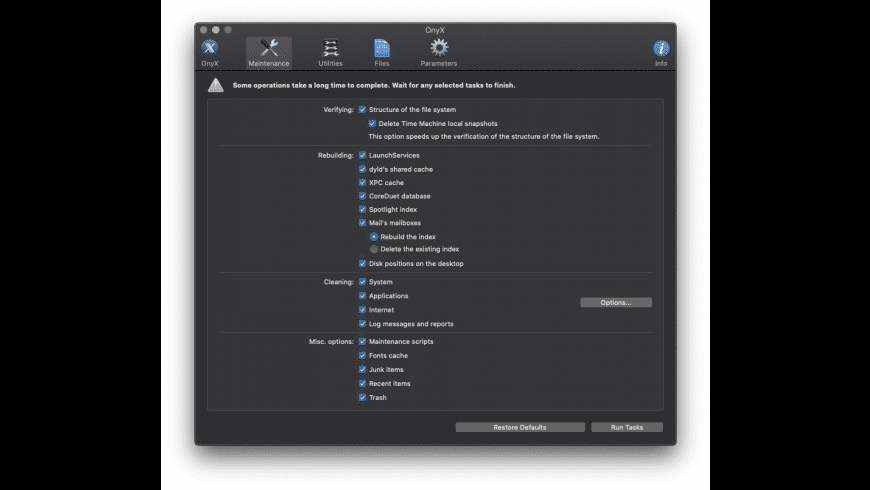Mac Os 64
Apple has released the next Mac OS Catalina (10.15) in early October. With the upgrade, Apple has finally pulled the plug on older '32-bit' apps, requiring all software (apps) you run to be 64-bit. This transition has been a long time coming and most current software complies. Here is an explanation about the difference and why Apple is doing this.
MacOS Catalina 10.15.7 Supplemental Update 2. MacOS Catalina 10.15.7 supplemental update addresses an issue that may prevent the battery from charging in some 2016 and 2017 MacBook Pro models. Search for torrents and play them right in your browser. The fastest, easiest, most enjoyable way to get torrents, period. Download µTorrent Web. Having trouble installing on Mac? Find the solution here. ΜTorrent Stable (1.8.7 build 45548) For Mac (4.07 MB) English (US) - May 20, 2020.

32-bit processors and 32-bit operating systems were used in all computers (Mac & PC) until the early 1990s. The software that ran on these computers was also 32-bit. In 2006 and 2007, Apple transitioned from the PowerPC hardware to Intel hardware using 64-bit processors. With the launch of Mac OS Snow Leopard in 2009, Apple's operating system took advantage of the faster 64-bit processor.
Compared to 32-bit apps, 64-bit apps can take advantage of more memory and offer faster system performance. Certain technologies from Apple will only work with 64-bit apps. For Apple to ensure that all Mac apps going forward include all of the latest advancements and optimizations, support for 32-bit needs to end.
Wine allows OS X users to run Windows applications. Note: this listing is for the official release of Wine, which only provides source code. If you want a version of Wine that is packaged specifically for OS X, then use Winebottler, available here. Which Intel Macs have 64-bit processors? Which have a 64-bit EFI? Which are capable of booting MacOS X 10.6 'Snow Leopard' in 64-bit mode? With the exception of the 'Mid-2010' Mac Pro models, Intel Macs boot Snow Leopard in 32-bit mode by default, and it's a bit complicated to sort out which Macs really are capable of booting MacOS X 10.6 'Snow Leopard' in 64-bit mode. If you’re using a 64 bit Kernel in Mac OS X: The x8664 at the end will let you know you are using the 64 bit kernel. You can alternate between the two by holding down “6” and “4” during system boot to load the 64 bit kernel, or holding down ‘3’ and ‘2’ during boot to use the 32 bit kernel.
32-bit apps can run on a 64-bit system as they've been doing for years, but Apple wants to get rid of outdated apps to make sure everything that runs on the Mac is properly optimized and isn't an unnecessary drain on system resources. It has been 9 years, so it truly is time for this change to happen.
Apple started warning Mac users about plans to end support for 32-bit apps when they introduced macOS High Sierra. These warnings are popups that appear when restarting the computer or opening an app. If you dismiss the notice it will reappear in 30 days. Apple is really being clear about this upgrade!
What does this mean for you? If you are running older software, you must upgrade it BEFORE you upgrade to Mac OS Catalina. Some common examples are Microsoft Office 2011 (current versions are Microsoft Office Home & Student 2019 or Microsoft Office 365) and Quicken 2007 (current version is Quicken 2019).
Apple software such as Safari, Photos, Contacts, etc., are all considered part of the Mac OS and will be fine.
To check if an app is 32-bit or 64-bit, and to see what older apps might be installed:
Click the Apple symbol () in the menu bar at the upper left corner of your Mac's screen.
Click on About This Mac.
Choose 'System Report' at the bottom of the window.
Scroll down to the Software list on the sidebar.
Select 'Applications.'
Scroll all the way to the right to see the 64-bit list.
Anything in this list that has a 'Yes' next to it is 64-bit and does not need to be updated. Anything that says 'No' will need to be updated. (NOTE: it can take a while for this scan to complete.) This can be confusing to read, but IF you update all the apps you use regularly, they should show in this list as a 'Yes.' IF they don't, you will need to find out if the developer makes a new version.
IF you choose to not upgrade to Mac OS Catalina, your current apps will continue to function, but be aware that may change as Apple releases security updates, etc.
NOTE: we are NOT yet recommending Catalina but getting prepared before the time to upgrade comes is always a good idea!.
Please call us for help or questions. 707-573-9649
I thought that my 27-Inch iMac 2.66GHz Intel Core i5 ran in 64-bit mode by default but I see that it doesn't right now. When I go into the System Profiler and select 'Software', I see:
64-bit Kernel and Extensions: No
Yet, when I look in my Activity Monitor, I see Intel (64-bit) under 'Kind' running for almost all the processes except for a couple. Is this ever royally confusing or what.
I use a couple of FireWire Interfaces for recording and would like to enable 64-bit mode for the extensions they use (for my M-Audio in particular).
How can I permanently enable 64-bit mode? I could swear that before I updated from 10.6.6 to 10.6.8 a few days ago that I was running in 64-bit mode. Also, does enabling 64-bit mode have any effect on Rosetta?
Is there any disadvantage to running in 64-bit mode (ie: will certain things not work)?
Thanks in advance.
27-Inch iMac 2.66GHz Intel Core i5-OTHER, Mac OS X (10.6.8), 8 GB RAM
Mac Os 64-bit Download
Posted on Nov 24, 2011 2:18 PM